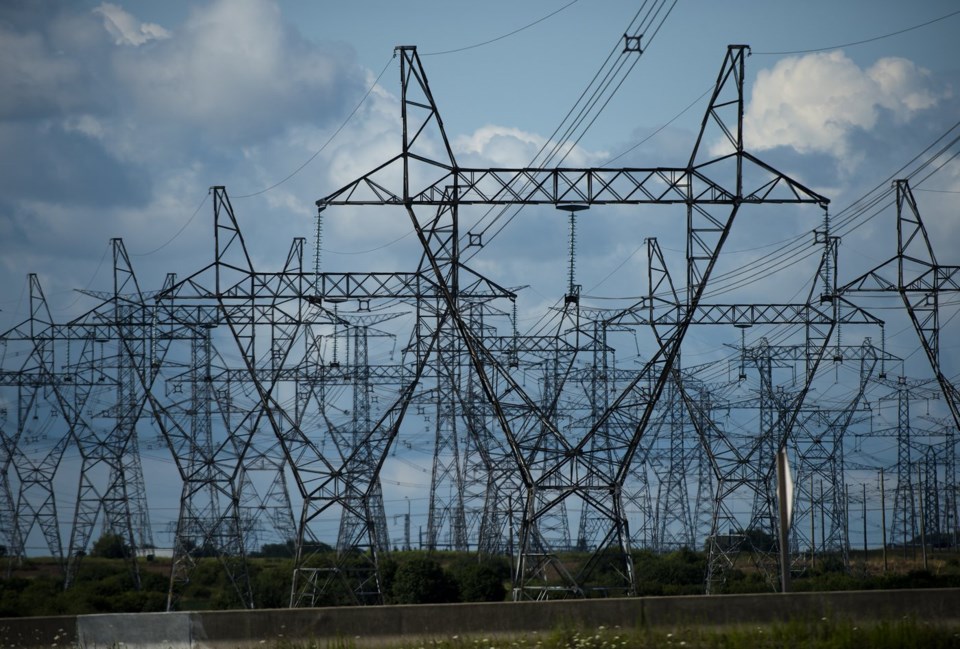TORONTO — Demand for electricity in Ontario is set to soar by 75 per cent in the next couple of decades, far higher than was projected just last year, in part due to a sudden surge in data centres supporting artificial intelligence, the system operator said Wednesday.
The demand has been relatively flat for the past 20 years, but now it is building and shows no signs of levelling off, officials with the Independent Electricity System Operator said in a briefing. Just last year, they expected demand to grow 60 per cent higher by 2050.
Much of that additional pressure will come from industry, such as the three electric-vehicle battery plants that are in the works and associated supply-chain manufacturing. Industrial demand is anticipated to rise by 58 per cent by 2035, adding the equivalent of a city the size of Toronto to the grid, the IESO said.
The new demand is also coming from data centres that need much larger amounts of energy to power artificial intelligence, the IESO said.
"Previously, the data centres, they existed ... but the energy use that data centres now require, because of these AI functionalities, is infinitely higher than it was previously," said Chuck Farmer, the IESO's vice-president of planning, conservation and resource adequacy.
"I'll be frank, we have been — as many system operators have been — caught a little off guard by how quickly this has happened."
At least 16 large data centres are forecast to be in service by 2035, accounting for 13 per cent of the new electricity demand.
Energy and Electrification Minister Stephen Lecce said he is working to ensure the system is reliable for those centres and all other forms of economic growth.
"This is a significant opportunity, but it creates pressure on the grid," he said.
"We don't deter investment or jobs or innovation that could take place in Ontario. AI and, as well, these data centres are very important when it comes to growing our economy, diversifying our economy and creating value-added jobs. So we understand that there's much more demand for energy on the system, on the grid, but we have a plan."
The IESO said the province has enough power for the rest of this decade, and Lecce said he will soon announce his "vision" for how to meet future demand with reliable, affordable and clean energy.
Ontario is already planning to bolster its output from nuclear generation, extending the life of the Pickering nuclear plant by two years while considering a larger refurbishment to get decades more out of it, considering building a new, large-scale nuclear plant on the site of Bruce Power's current generating station and building four small modular reactors.
As well, the IESO is preparing a new energy efficiency framework for programs to manage demand and conserve energy, and the province is procuring thousands more megawatts of electricity generation, with Lecce eyeing a mix of natural gas, hydroelectric, renewables, nuclear and biomass.
Green Party Leader Mike Schreiner said he is worried the government will lean even more heavily on natural gas to fill the supply gap created by all of the additional demand for electricity.
"My concern is the government's going to choose an expensive, dirty approach, which is ramping up gas plants — which is what they've been doing," he said.
"(It) makes absolutely no sense when wind, solar, battery storage and water power are far cheaper, far cleaner and can be deployed much faster."
In 2021, the electricity system was 94 per cent emissions-free, but that is now down to 87 per cent as the province relies more on natural gas generation.
Since taking on the energy portfolio this summer, Lecce has been unapologetic about the use of natural gas to ensure reliability in the electricity system.
"Natural gas is an insurance policy that is important for Ontario, particularly during peak periods where we need that energy that we just can't deliver to industry and people," he said.
"But the truth is, Ontario has one of the cleanest grids on Earth."
This report by The Canadian Press was first published Oct. 16, 2024.
Allison Jones, The Canadian Press




